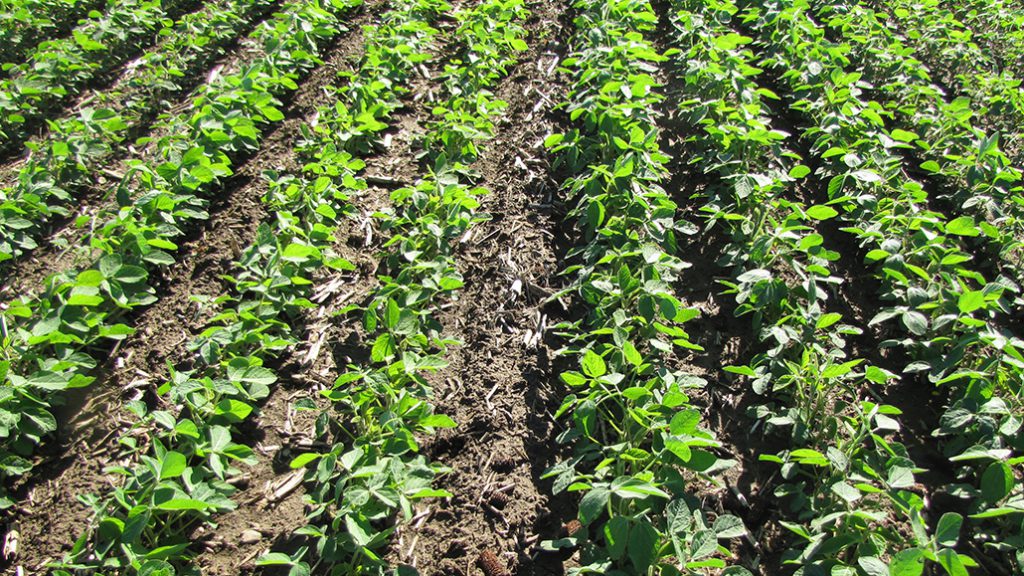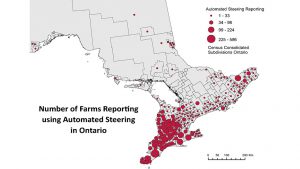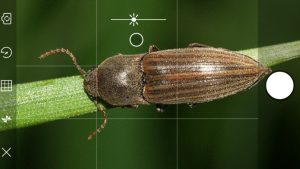P and K management
FINDING AN ECONOMIC AND SUSTAINABLE STRATEGY

SOIL TEST PHOSPHORUS (P) and Potassium (K) values in Ontario have been declining. Higher yields remove more nutrients and not enough fertilizer is being applied to replace the P and K being removed. Soybean yields have increased by eight bushels/acre (bu/ac) over the last 10 years in Ontario. The five-year soybean yield average for the province in 2017 was 46 bu/ac compared to a five-year average of 38 bu/ac in 2007. Corn has gone up by 26 bu/ac and wheat by eight bu/ac over the same period. On the other hand, over-fertilizing is not only costly, it will result in environmental losses. Finding an economic and sustainable strategy for P and K management is essential for Ontario grain farmers.
PHASE ONE
In 2011, the Ontario Ministry of Agriculture, Food and Rural Affairs (OMAFRA) and the University of Guelph started phase one of a long-term project to compare two strategies: the sufficiency approach (current OMAFRA fertility guideline) versus the build-and-maintain approach. The sufficiency approach aims to provide enough fertilizer for a given crop in a given year to maximize economic returns. It’s also called the “feed the crop” approach. This strategy was compared to the build-and-maintain approach which aims to raise the soil test to a reasonable soil test level and then enough fertilizer is applied to maintain that level. It’s also called the “build the soil” approach.
Phase one of the project showed that the highest yields for all three crops were achieved with the build-and-maintain approach. In the plots, P levels were raised to approximately 20 ppm and K was raised to 120 ppm or slightly higher. Maximum yields could not be achieved using the sufficiency approach alone when feeding the crop in the spring. Soybean yields were raised by 4 bu/ac, corn by 13 bu/ac, and wheat by 10 bu/ac with the build-and-maintain approach compared to the sufficiency approach. However, crucial questions remain unanswered. Were yields responding to the “buildup phase,” because P and K is more extractable with new fertilizer applications? And how important is soil health in determining the amount of fertilizer necessary to grow high yielding crops?
PHASE TWO
Phase two of this project is currently underway to answer these crucial questions during the “drawdown” phase. Few long-term fertility datasets exist that examine the drawdown phase where fertility responses consider the effects of soil health. For instance, peer-reviewed reports show that the availability of nutrients depends on such factors as soil organic matter, pH, and texture. Soil health indicators will be examined on selected plots to understand how yields are influenced by both fertility and soil health. For example, soil P levels vary greatly within any given field. The spatial variability in response within and among field sites may be due to varying soil health processes. This research is needed to fine-tune fertility programs by considering the influence of soil health. There may be opportunities to manage field zones low in P differently, or with different soil health, compared to areas that are high in soil test P through precision agriculture technologies. During the next three years, if the highest economic yields are still produced with built background levels of P and K, then the evidence will strongly favor the build-and-maintain approach.
One strategy to mitigate soluble P runoff could be to build soil test P then maintain levels using starters because P would be placed below the surface. This project will test this hypothesis.
Findings from this study will have implications for site-specific management and enhance our understanding of the connection of soil health to fertility responses. It will provide farmers with clear guidance on the optimal approach for economically and sustainably managing P and K by updating OMAFRA fertility guidelines if it is warranted. From a holistic approach to sustainably managing nutrients, this work supports 4R nutrient stewardship by considering nutrient supply from all sources and assessing the crop uptake and soil supply.
This project was funded in part through Fertilizer Canada and Grain Farmers of Ontario.
Horst Bohner is the provincial soybean specialist with OMAFRA. Dave Hooker is an associate professor in the Department of Plant Agriculture at the University of Guelph Ridgetown Campus.
This research project received funding from Grain Farmers of Ontario. •



























